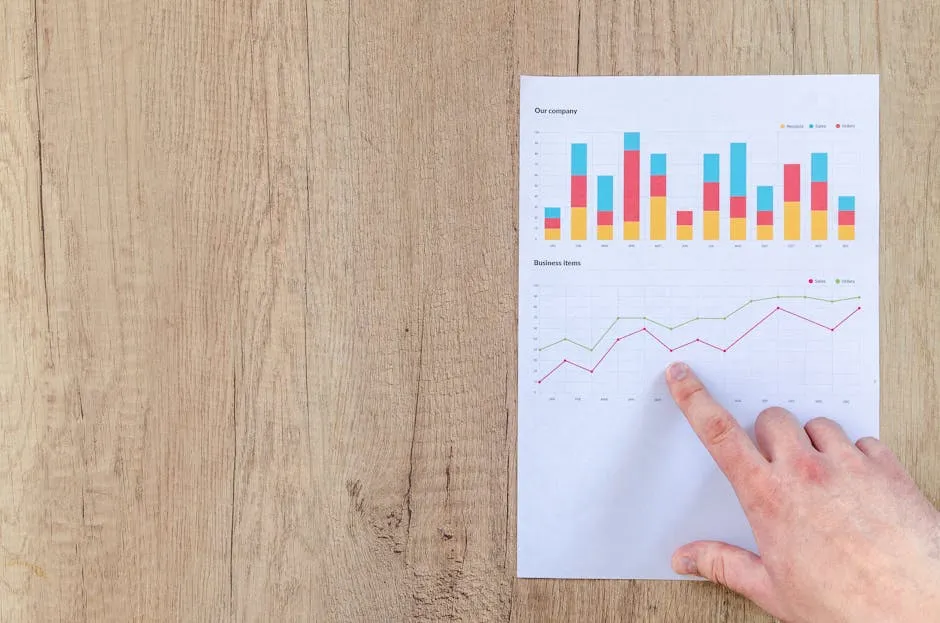Introduction
The 7mm-08 Remington cartridge is a favorite among shooters and hunters. Its blend of power and accuracy makes it versatile for various applications. Accurate reload data is crucial for optimizing performance, ensuring each shot counts. This article aims to provide detailed reload data and best practices specifically for the 7mm-08 cartridge.
Summary and Overview
The 7mm-08 Remington cartridge emerged from the .308 Winchester case, necked down for 7mm bullets. Introduced by Remington in 1980, it quickly gained popularity for its efficiency and manageable recoil. This cartridge shines in both hunting and target shooting, making it a go-to choice for many enthusiasts.
Choosing the right components is vital for achieving the best results. This includes selecting suitable bullets, powders, and primers. Safety is paramount when reloading, so always follow precautions to prevent accidents. In the following sections, we’ll cover essential load data, bullet weights, and powder options that can enhance your shooting experience.

Understanding the 7mm-08 Remington Cartridge
Historical Background
The 7mm-08 cartridge originated from the .308 Winchester in the late 1950s. It was developed as a wildcat cartridge before being commercialized by Remington. Since its introduction, it has earned a solid reputation for its effectiveness across various hunting environments. The 7mm-08 offers a flatter trajectory compared to other cartridges like the .308 Winchester, making it ideal for long-range shots.
Over the years, the 7mm-08 has become a staple in the shooting community. Its versatility in handling different types of game adds to its appeal. Many shooters favor it for deer and elk hunting due to its effective performance. Have you used the 7mm-08? Share your experiences in the comments!
Performance Characteristics
The 7mm-08 Remington cartridge showcases impressive performance metrics. It typically achieves a velocity of around 2,800 to 3,000 feet per second, depending on bullet weight and powder used. This results in energy levels that range from 2,400 to 2,900 foot-pounds, making it effective for various game.
When comparing it to other popular cartridges, the 7mm-08 stands out. For instance, the .308 Winchester has a similar energy output but generally features heavier recoil. Meanwhile, the .270 Winchester offers a flatter trajectory but with slightly less energy at longer ranges.
Ballistic coefficients for the 7mm-08 are favorable. They often range from 0.400 to 0.500, allowing it to maintain speed and accuracy over distance. When considering trajectory, the 7mm-08 experiences minimal drop, making it an excellent choice for long-range shooting.
This cartridge excels in diverse environments, from dense woods to open fields. Its versatility makes it suitable for deer, elk, and even varmint hunting. What’s your preferred use for the 7mm-08? Share your thoughts in the comments!

Powder Selection
Choosing the right powder for the 7mm-08 is crucial. Several manufacturers offer excellent options that fit various needs. Popular choices include Hodgdon, Alliant, and VihtaVuori. For example, Hodgdon Varget Powder is known for its accuracy and versatility, making it a go-to for many reloaders.
For lighter bullets, consider Hodgdon Varget or Benchmark. These powders provide consistent performance and are known for their accuracy. If you’re using heavier bullets, try Hodgdon H4350 Powder or Alliant Reloder 17 Powder. They excel in providing high velocities and precision.
Powder types also play a role. Ball powders, like Hodgdon H335, flow easily and provide uniform charges. Stick powders, such as IMR 4064 Powder, are great for accuracy but can be trickier to measure.
Burn rates and temperature stability matter too. Some powders perform better in cold conditions, while others shine in heat. Always check the manufacturer’s data for specifics.
When selecting a powder, it’s smart to test several combinations. Start with the recommended loads and adjust as needed. Keep notes on performance. This way, you can fine-tune your setup.
What are your favorite powders for the 7mm-08? Share your preferred combinations in the comments!

Load Data by Bullet Weight and Powder
When reloading the 7mm-08, load data varies by bullet weight and powder type. Below is a comprehensive table of load data for bullet weights ranging from 100 grains to 175 grains.
| Bullet Weight | Powder | Starting Gr. | Max Gr. | Starting Vel. | Max Vel. | Starting Press. | Max Press. |
|---|---|---|---|---|---|---|---|
| 100 gr | Hodgdon H414 | 40.0 | 44.5 | 3,000 | 3,300 | 50,000 | 55,000 |
| 120 gr | Hodgdon Varget | 43.0 | 47.5 | 2,800 | 3,020 | 52,000 | 57,000 |
| 140 gr | Alliant Reloder 15 | 40.5 | 44.0 | 2,700 | 2,900 | 52,500 | 57,500 |
| 150 gr | Hodgdon H4350 | 39.0 | 43.0 | 2,600 | 2,800 | 51,000 | 56,000 |
| 160 gr | VihtaVuori N160 | 38.0 | 42.0 | 2,500 | 2,700 | 50,000 | 55,000 |
| 175 gr | Alliant Reloder 17 | 37.0 | 41.0 | 2,400 | 2,600 | 48,000 | 53,000 |

Always start with the lower charge weights and work your way up. This helps you find the perfect load for your rifle. Remember, each firearm may behave differently, so what works for one might not work for another.
Safety is paramount! Never exceed the maximum load listed. Consult multiple sources and verify data before proceeding.
How has your load development experience been? Document your findings and share them with the community!

Best Practices for Reloading
Safety Precautions
Reloading ammunition can be rewarding, but safety is key. Always handle components with care to prevent accidents. Start by ensuring your reloading equipment is in good shape. Inspect tools for any signs of wear or damage. A clean workspace minimizes distractions and hazards.
Following published data is crucial. Always use reliable sources for load recipes. This helps prevent overpressure situations. Overpressure can lead to dangerous malfunctions. Familiarize yourself with your firearm’s specifications and limitations.
Recognizing signs of overpressure is essential. Look out for flattened primers, excessive recoil, or difficult extraction. If you notice these, stop reloading immediately. Don’t hesitate to consult an experienced reloader or a professional if you have questions.
What safety tips do you follow while reloading? Share your insights in the comments!

Load Development Techniques
Developing loads is an art that requires patience and precision. One effective method is ladder testing. This involves firing a series of rounds with incremental powder charges. It helps identify the optimal load for your rifle.
Another method is the Optimal Charge Weight (OCW) technique. Here, you shoot different loads and look for tight groups on the target. Consistency in grouping is crucial for accuracy. It’s not just about velocity; the way bullets group matters too.
Documenting your results is vital. Keep a detailed log of each load you test. Note the powder type, charge weights, bullet seating depth, and any observations. This record will guide future load development and help you refine your process.
Remember, every rifle is unique. What works for one might not work for another. Be prepared to experiment and adjust.
If you want to ensure your gear is well-organized for your reloading process, consider getting a RCBS Reloading Kit. It can help streamline your setup and make reloading a more efficient process.
How do you approach load development? Share your techniques in the comments!
Conclusion
In this article, we covered essential aspects of 7mm-08 reload data. We discussed bullet weights, powder selection, and detailed load tables for optimal performance. Careful load development is crucial for achieving accuracy and safety.
Accurate reload data significantly impacts your shooting experience. It’s important to experiment responsibly with different loads and components. We encourage you to share your findings with others in the reloading community. Your experiences can help fellow reloaders optimize their setups. Happy reloading!

FAQs
What is the best powder for 7mm-08?
For the 7mm-08, several powders stand out. Hodgdon Varget and H4350 are popular for lighter bullets. If you’re using heavier bullets, consider Alliant Reloder 17. Each powder offers unique burn rates and characteristics, so choose based on your specific bullet weight and application.
How do I determine the right bullet weight for my 7mm-08?
Choosing the right bullet weight depends on your intended use. If you’re hunting, heavier bullets (like 150-175 grains) are ideal for larger game. For target shooting, lighter bullets (around 120-140 grains) can enhance accuracy and reduce recoil. Always consider your firearm’s specifications as well.
Can I use .308 Winchester data for 7mm-08?
No, you should not use .308 Winchester data for 7mm-08. Though they share a case design, they have different pressure levels and performance traits. Always refer to specific 7mm-08 reload data to ensure safety and accuracy.
What safety measures should I take while reloading?
Safety is paramount when reloading. Always wear protective eyewear and keep your workspace organized. Ensure your reloading tools are in good condition and follow published load data strictly. Be aware of signs of overpressure, like flattened primers or difficult extraction.
Where can I find reliable load data for 7mm-08?
For reliable load data, refer to manufacturer manuals from Hodgdon, Alliant, and VihtaVuori. Websites like Nosler and Shooters Reference also provide excellent resources. Always cross-check data to ensure accuracy and safety before loading.
If you’re looking to enhance your reloading experience, consider checking out a Lyman Reloading Handbook. It’s a great resource packed with information and tips for all levels of reloaders.
Please let us know what you think about our content by leaving a comment down below!
Thank you for reading till here 🙂
For more insights on the importance of understanding book length and content, check out this introduction to statistical learning with Python.
If you’re interested in the statistics of hunting, particularly elk, consider reading this comprehensive guide on Colorado elk hunting statistics.
All images from Pexels




